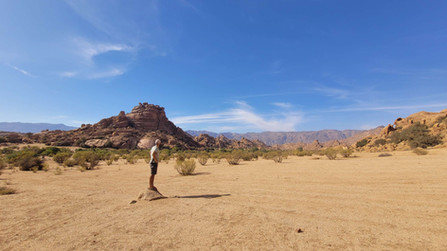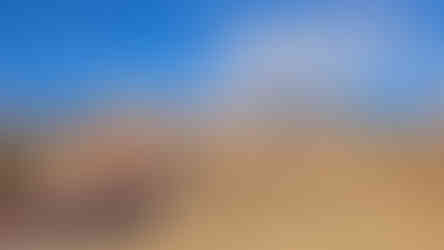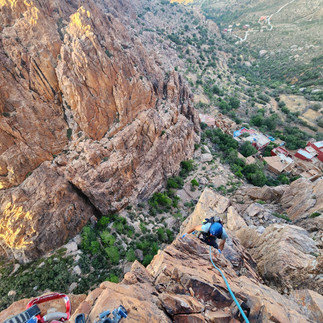Rock Climbing in Morocco 2024
- Wilfred.S
- Aug 6, 2024
- 10 min read
Updated: Jul 23

For Six weeks, through May and June of 2024, I went on a Rock Climbing trip to Morocco with my mate Jason. We went without much knowledge of what we would find, we had seen some photos online and read some blogs, but the pieces never really fit together. Morocco as a rock climbing destination was almost unheard of by anyone I talked to in Australia or NZ. This post is aimed at sharing some of the knowledge that I gained in hope of inspiring more people to go and check out this awesome place.
To add some context to this post, here is a brief synopsis of our 6 weeks in Morocco:
We flew into Marrakesh and stayed a night before getting the bus to Todra Gorge. Our plan was to spend 10 days here climbing, however the climbing didn't suit our style so much, so we cut it short and made our way to Tafraout where we were delighted to find a mecca of brilliant rock. Close to the town of Tafraout itself, there are thousands of small granite domes and boulders that have a mix of bolted and traditionally protected routes, with some spectacular lines, from splitter cracks, to delicate slabs. Just next to the town of Tafraout is the Jebel El Kest Massif, a huge mountain of Quarzite rock that holds thousands of epic routes in a multitude of different valleys. We were blown away by the scale of things here.
We spent 10 days on the south side, staying at the Tete De Lion campground, and 10 days on the North side, in the Ksar Rock Guesthouse. After 20 days here it felt like we had just scratched the surface. This rounded out about a month of climbing and from here we headed to the coast for to surf for two weeks.
When to go: The climbing season in Morocco is typically during the northern hemisphere winter from October through to April, outside of this time it can get very hot, too hot to climb. We didn't know this when we went, so we were climbing for the month of May. It did get very hot towards the end of the month, but overall we were pleasantly surprised by the temperature and the heat was not a problem. If I were to plan a trip again, I would try to go around March-April or in October. Another great reason to go over the winter months is that that is when the surfs up.
Where to go:
Todra Gorge
The first Destination on our trip was Todra Gorge, also know as Gorges Du Todgha. This was the place that inspired us to come to Morocco in the first place. We heard tales of a towering limestone gorge, with fully bolted routes winding their way up the walls that were hundreds of meters long.
Todra Gorge is located east from Marrakesh, on the other side of the Atlas mountains. It takes about 6 and a half hours to drive there using roads of good quality all the way. We got there using the bus system, and it took us the whole day. Getting around Morocco is a topic in its self, so I will go into detail on that in another post.
How to get there on the bus
From CTM bus station in Marrakesh you have to buy a fare to Tinghir, the closest town to Todra gorge. This route will first take you to Ouarzazate where you then get on the connecting bus to Tinghir. This takes about 9 hours and costs 165MAD ( $28.50nzd) From Tinghir the journey is not over! From here catch a taxi, or if your feeling adventurous, get the local bus to Tizgui, its about 20 minutes.

The Climbing
In all honestly we were somewhat underwhelmed with the climbing at Todra Gorge. Before coming to Morocco we had spent two weeks climbing at Mt Arapiles in Australia. We had gotten used the to the solid, textured rock of Mt Arapiles, and now the smooth and sharp limestone of Todra Gorge felt second class. On popular routes the rock could be polished and smooth, but in other areas the limestone had been eroded in a peculiar way so that it was very sharp and spikey, it meant that you feet would have incredible friction and stick to the spikes, but it was brutal on your fingers.
Dont get me wrong, its still an epic spot, but I think we got off on the wrong foot with it, firstly by climbing the popular sport routes which were quite polished. And then on our third day, we climbed a long route called Tifegha which was ridden with loose blocks and hollow sounding rock. This put us off quite a lot, and we never regained the stoke for the place, even after climbing a few more great routes there. I will name a few of my favourites below:
"Voie Classique" on the Pilier du Couchant was a great day outing. This was a 300m bolted route grade 6b (NZ grade18/19) climbing up solid rock on a great looking part of the gorge.
Eléphant on the Eléphant crag. 95 meters, 3 pitches, grade 6b. Watch out for the first pitch, it felt hard.
Jardins d'ete. This is a crag at the end of the gorge which gets lots of shade and has great quality rock, with good moves, a large range of grades and its well bolted, everything you could ask for.
There is a small climbing shop in Tizgui that sells a guidebook. However, the guidebook is a homemade paperback book which does have a few errors in the topo guides. Make sure you get the most recent addition, there is a new edition every two years or so.
Where to stay
Todra Gorge is a popular place with tourists, as a result there are many options for accommodation. Tizgui is the name of the village close to the gorge itself. Most of the accommodation options are here, and it feels quite relaxed (apart from the cars flying past), there are often kids out on the street in the evening socialising. For the period we were there, everywhere had lots of availability. I would book a couple of days for when you arrive, but it might be worth leaving your options open so your not committed to one spot.
We stayed at "Hôtel Etoiles Des Gorges" because it was the closest place to the gorge, a 10 minute walk up the road from Tizgui. "Close" to the gorge is probably an understatement, it was pretty much inside of the gorge. From the front porch you could gaze upwards at the towering orange walls while you sip tea and enjoy your breakfast. I would recommend this place due to its location and its price, but don't expect high end comfort or amenities. This place cost about $15nzd per person per night including breakfast.

While climbing at Todra Gorge we never touched our trad racks. Typical sport climbing gear is all you need. However, many of the raps had been created for use with a 70m rope and have 35m raps. So if you are climbing with a single rope, make sure its a 70 meter rope or bring double ropes.
Tafraout and the Jebel El Kest

Tafraout (also spelt Tafraoute) is located farther south in Morocco, in an area called the Anti-Atlas mountains, its about 5-6 hours drive from Marrakesh.

The amount of climbing in the Anti Atlas is overwhelming. We didn't know anything about the area before we arrived, we were even debating leaving our trad gear at home. I'm so glad we brought it! The more you climb here, the more you realise you have only scratched the surface. The guidebook we used has over 1700 routes, but there are so many spectacular looking cliffs that don't even get a mention in the guide book. The walls that do get a mention often have a smattering of routes, but still have so many more possible lines. If you want to do a first ascent, The Jebel el Kest is a great spot for it.

Close to the town of Tafraout its self, there are many different granite tors and domes which have a mix of bolted, trad, and bouldering routes on them. Although its grantite, the rock can be a bit crumbly, or sugary, as some say. Despite this, there is no lack of class climbs to get you excited. I am new to the art of crack climbing and the Tafraout granite has enough splitter cracks to get me hooked! Next to Tafraout is the Jebel El Kest, a huge Quarzite massif which is the backbone of the Anti- Atlas mountains. The Jebel El Kest is entirely trad climbing, with no bolts at all. The rock here can range from Mt Arapilies grade solidarity, to fear inducing choss, however most of the time its pretty solid. Most of the climbing here are mid grade adventure routes, where the essence of the climbing is more about exploring this wild remote place, rather than pushing the envelope of hard trad climbing.
Due to the size of the area, you will need a rental car to make the most of your time there.
Driving around Tafraout was great, the roads were quiet and generally good condition. Tafraout has everything you need, the town is not huge but there is a small supermarket, and lots of fruit and veggie markets. There is no climbing store, but the carpet shop "Masion Troc" is the closest thing they have. They sell the guidebook (if it hasn't sold out) and also have a few bouldering pads which the lend out. They are very friendly, have good english, and are genuinely happy to help.
Where to stay
There are many different spots you can base yourself from depending on where you want to climb. We spent our first 10 days at the Tete De Lion campground in Tafraout while we explored the crags on the southern size of the Jebel El Kest. Each day we were there we went to a new crag, each one ranged in size, but would usally be between one and four piches high and have enough great routes to keep you busy all day. The approach for most crags was less than an hour. Some crags, like Palm Tree Gorge, were only a 10 min drive and 5 minutes walk to get there. Overall the climbing is very easily accessible.
For the second part of our stay in the Tafraout area we decided to stay at the Ksar Rock Guesthouse. This is on the north side of the Jebel El Kest, about 1.5 hrs drive from Tafraout. For me, the 10 days we spent here were the highlight of our trip. The guesthouse is a popular place for climbers to go, we expected to be able to meet and mingle with a few other climbers but were disappointed to find that everyone had left due to it being late in the season (end of May). The north side of Jebel El Kest looks like something from a fairly tale movie. We spent our first day there just driving around looking at all the different cliffs.
Right behind our guesthouse was Ksar Rock, this rock alone could keep you entertained for days, but your attention will drift elsewhere when you see the huge faces looking at you from across the valley. Lower Eagle, Griffon Rock and the Annamer Crags are all within walking distance and have enough climbing to keep busy for weeks. Parallel with the Afantinzar valley is the Tamdkrt Valley.
Tamdkrt valley, also known as Samazar, is not to be missed. It is the most magnificent of all the valleys we went to, and might just be one of he most picturesque spots I have ever been. It is still undiscovered by tourists and the only other people we saw were locals off to the market. Somehow this valley remained undiscovered by climbers untill the late 2000s, so development is still in its infancy. Most routes around here range from 100 to 300 meters, the longest route we did was 500 meters including scrambling to to the top.
What to bring
Rock climbing shops like you might get in Australia or NZ are not a thing in Morocco, so you need to be totally self sufficient. Between us we had a complete double set of cams from small blue to big blue, a few micro-cams, a double set of nuts, 15 Quickdraws, and 60m half ropes. Bringing a second pair of shoes is not silly, especially if your there for a long time. Dropping a shoe mid way up a 300m route could be a game ender.
The gear we brought was great, double/half 60m ropes are necessary for some raps.
I thought 15 Quickdraw was excessive to bring, however it turns out that a lot of the climbs have 50m-60m pitches, and we ended up using all of them on some routes!
Micro cams
Not 100% necessary, but we did find ourselves using them quite a lot.
Extra I would bring next time:
1: Tat and Mallions
There are no Bolts in the Jebel el Kest area, so you need to rely of webbing to repel off high points. All the repel points we used already had some tat in place, and it most it was in good condition and looked like it had been replaced recently, but it's best to have some extra in case you come across old or frayed material.
I would bring about 8-10m of tubular webbing, or 7mm cord, and a small knife so you can cut it to length as you need it. Also having a few steel mallions or old carabiners you don't mind leaving behind is handy.
Big cams.
Our biggest cam was a big blue (black diamond C4) There were many times where a big silver or even a big purple would have been (very) handy. There are quite a few off width cracks around, just too big for our blue cams to fit. We got by alright without them, but there sure were some scary moments.
Friends
No, not Wild Country friends, but real, actual, friends. In the three weeks we spent in Tafraout, we did not see another climber. This is mainly due to the fact that we came late in the season, but even so, there is no cliff rescue in Morocco, and it would be nice to know that if something happens, someone with the required skills knows what your doing and can come and help you.
Small pack
I like to use a trail running pack because it does not hang low and interferer with my harness, and you can add weight to the front pockets so the balance still feels good.
Cost
How much did this trip cost? While getting to Morocco is quite expensive (from the southern hemisphere) staying there is pretty cheap. Here are some expenses to get a reference:
Each night in Ksar Rock Guest house cost 200MAD ($34 NZD) including breakfast AND dinner per person.
Each Night at the Hôtel Etoiles Des Gorges at Todra gorge was about 90MAD ($15NZD)per night including breakfast per person.
Eating out can range anywhere from 40MAD to 100MAD ($7-16NZD) depending on where you are and how many tourists go there.
Staying at the Campground was 45MAD ($7NZD) each night per person
Our rental car cost $1600nzd for 35 days and full coverage insurance. This was our biggest expense while we were there but it was totally worth it. ($30-$50NZD per day)
Taxis will always try and rip you off, but if you get good at bartering they are cheap. A typical taxi ride around the city should cost no more than 50MAD, but they will try and charge you 200. Using the share taxis can cost as little as 6MAD ($1nzd).
Other advise
Don't rely on google maps. People don't use it so much over there, so when you trying to find the closest supermarket or atm, asking a local is much more reliable.
Thanks for reading, if this helped or inspired you, consider sharing it with your climbing buddies.
















































































Comments